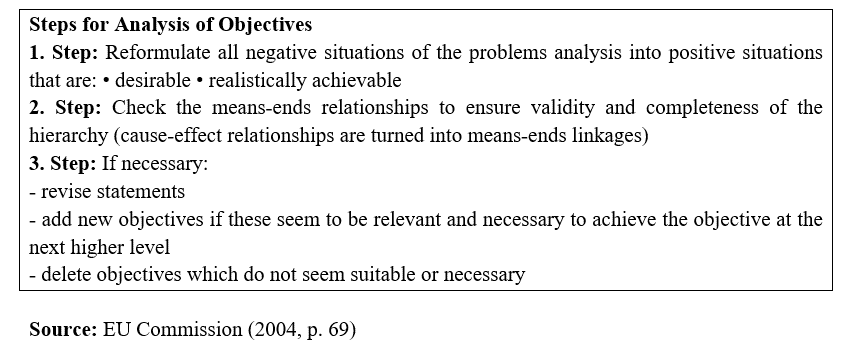Information

Summary: Involves setting SMART objectives that are Specific, Measurable, Achievable, Relevant, and Time-bound, ensuring clarity and alignment with project goals.
Learning Objectives:
Another step after problem tree analysis is goal analysis. The success and extent of the goal analysis is related to how well and correctly the problem analysis is done. Goal analysis is performed by transforming the problems identified in your problem tree into goals.
If we give an example through the problem of youth unemployment, our goal will be defined with positive sentences such as reducing youth unemployment or increasing youth employment. However, as mentioned in the problem analysis, your project will provide the solution to the main problem, but will not be at a level to solve the overall problem alone. Therefore, if you turn the general problem into a goal, your overall goal/objective in your project proposal will be "To reduce the social and economic disadvantage of young people and to contribute to their psychological well-being.". Your purpose should be defined in a more specific framework that includes the stakeholders of the project. For this, stakeholder analysis is required.
Once you have determined your project goals, the activities you will perform while achieving these goals will have results. These results are related to root causes at the bottom of your problem tree analysis. Similarly, you need to transform your sub-problems and root causes into results with positive and desirable sentences (Usha Rani et al, 2022, p. 32).
After converting all the statements in your problem tree into goals, a draft version of your goal analysis will be prepared. However, to complete the analysis, it is helpful to double-check the hierarchical connection of the targets and add new targets as needed. After these revisions, your target analysis will be complete.

